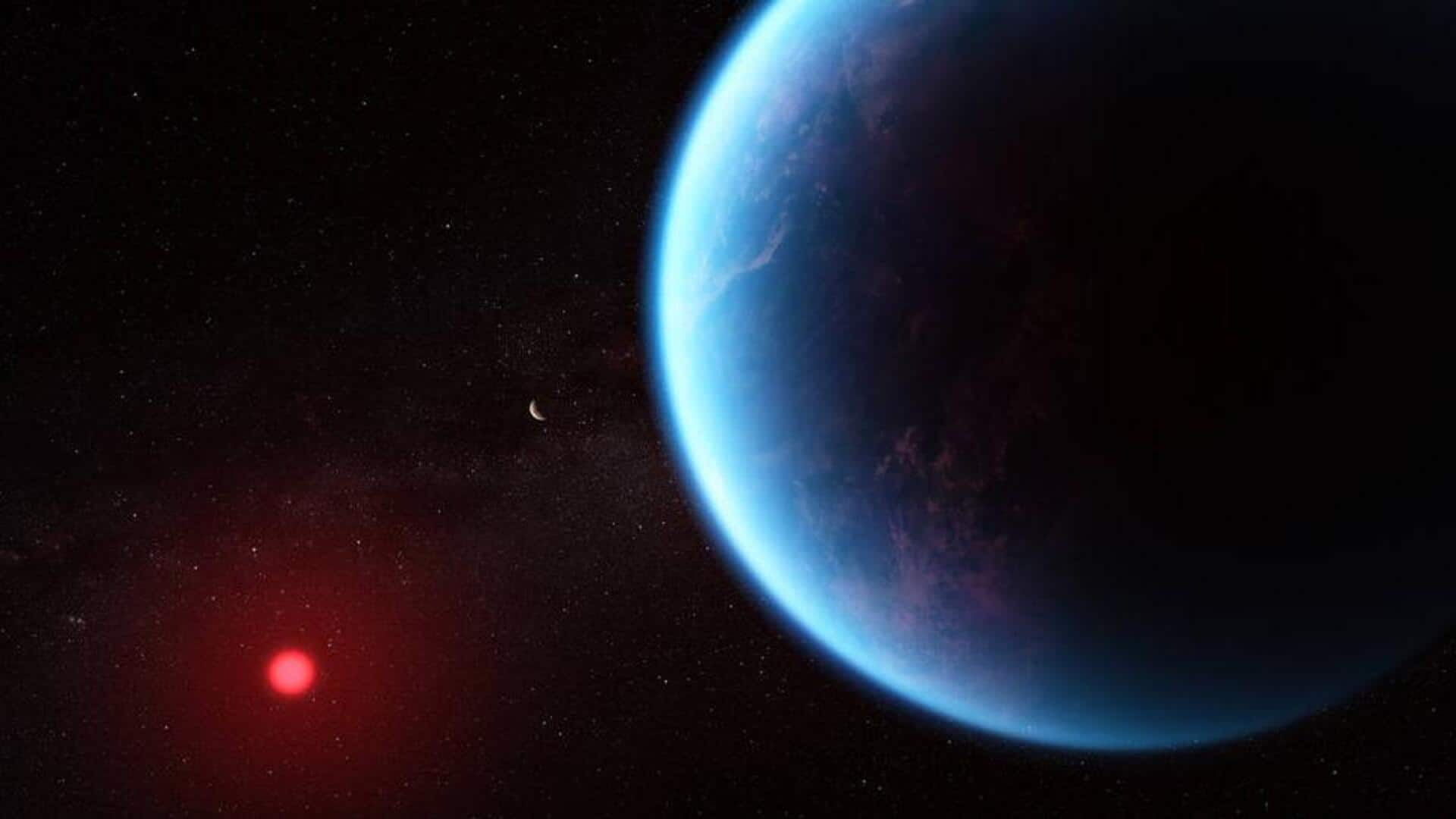
JWST detects life-supporting elements in the atmosphere of an exoplanet
What's the story
The James Webb Space Telescope (JWST) has unveiled something intriguing yet again. The telescope has detected carbon-based molecules in the atmosphere of an exoplanet that could be harboring oceans.
Dubbed K2-18 b, this alien world could classify as a Hycean exoplanet, one which could possibly contain a "hydrogen-rich atmosphere and a water ocean-covered surface," per NASA.
With a mass 8.6 times that of Earth, this exoplanet lies 120 light-years away from us.
Details
K2-18 b lies in a habitable zone from its star
K2-18 b is situated in the habitable zone of its star, where it is neither too cold nor hot to contain liquid water.
The exoplanet has a size between that of the Earth and Neptune and is "unlike anything in our solar system," says NASA.
JWST's latest findings of carbon dioxide and methane, without ammonia, indicate a water ocean may be present beneath the exoplanet's hydrogen-rich atmosphere, thereby making it an exciting target for astronomers.
JWST
'Large Hycean worlds are significantly more conducive to atmospheric observations'
"Our findings underscore the importance of considering diverse habitable environments in the search for life elsewhere," said the study's lead author, Nikku Madhusudhan.
"Traditionally, the search for life on exoplanets has focused primarily on smaller rocky planets, but the larger Hycean worlds are significantly more conducive to atmospheric observations."
The team behind the discovery believes the JWST's capabilities have already proven invaluable, with just one transit providing as much data as Hubble Space Telescope could gather in eight similar crossings.
Upcoming observations
The team will continue to monitor the alien world
Interestingly, the telescope could have possibly detected a molecule called dimethyl sulfide (DMS). On Earth, DMS is a by-product of life, emitted into the atmosphere mainly by marine phytoplankton.
The team will continue to observe K2-18 b using the JWST and its onboard Mid-Infrared Instrument (MIRI) to assess their findings and gather more information about the exoplanet's environmental conditions.
Upcoming observations should also confirm if DMS is present in the exoplanet's atmosphere at significant levels.